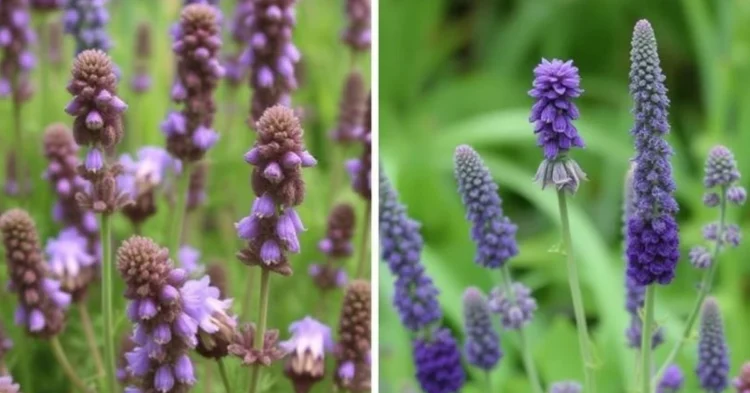Weeds with purple flowers might look charming at first glance, but don’t let their beauty fool you. Many of these vibrant, flowering intruders are aggressive, fast-spreading, and can quickly take over your lawn or garden if not properly identified and controlled. Whether it’s wild violets sneaking through your turf or purple loosestrife choking out native plants near waterways, understanding the characteristics of these weeds with purple flowers is the first step in managing them.
Table of Contents
In this comprehensive guide, we’ll introduce you to 14 of the most common and persistent weeds with purple flowers, explain how to identify them, and provide proven tips to remove and prevent them for good.
1. Wild Violet (Viola sororia)
Wild violet is a low-growing, clump-forming weed with heart-shaped leaves and small, purple-blue flowers. Although some homeowners enjoy its look, it can spread aggressively in shady, moist areas of your lawn.
Commonly Found: Moist, shady lawns and garden beds
Control Tips:
- Hand pulling is largely ineffective because of deep, fibrous roots
- Apply a broadleaf herbicide in fall
- Improve turf density with aeration and fertilization to choke out new growth
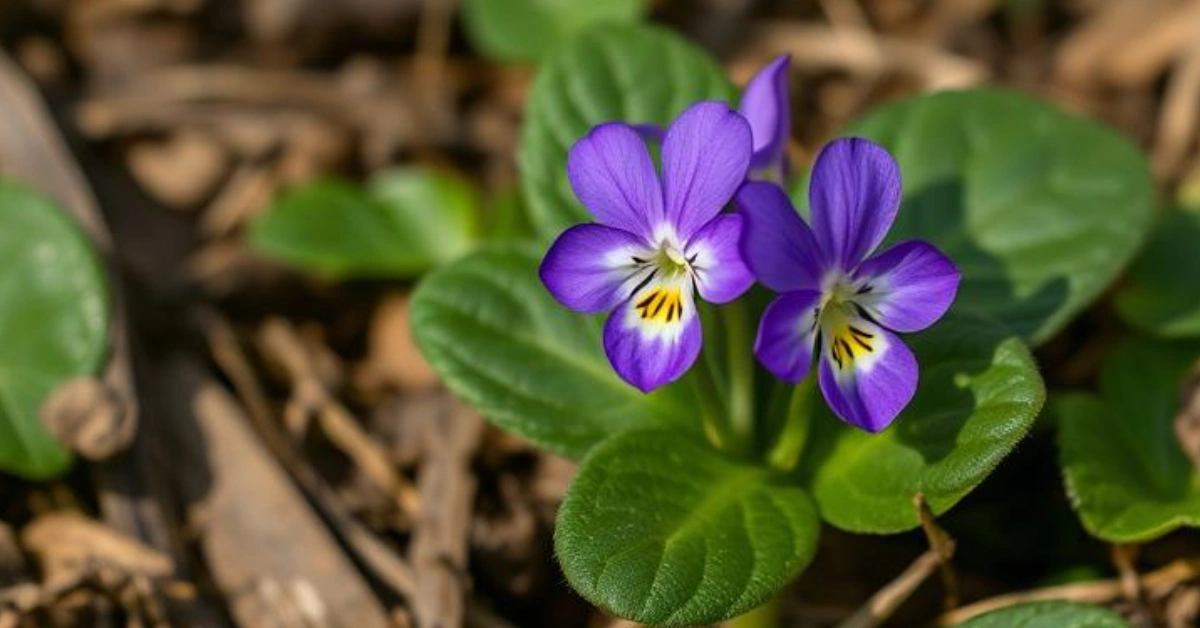
6 Must-Have Trees With Purple Flowers in your Garden for Privacy, Pollinators, and Edible Blooms
2. Ground Ivy (Glechoma hederacea) – aka Creeping Charlie
This aromatic, vine-like plant has round, scalloped leaves and purple flowers in spring. It spreads rapidly via above-ground runners and often invades weak, shady lawns.
Commonly Found: Shady areas with moist soil
Control Tips:
- Hand-pulling after rain helps remove roots
- Use post-emergent herbicides labeled for ground ivy
- Increase sunlight exposure and lawn health
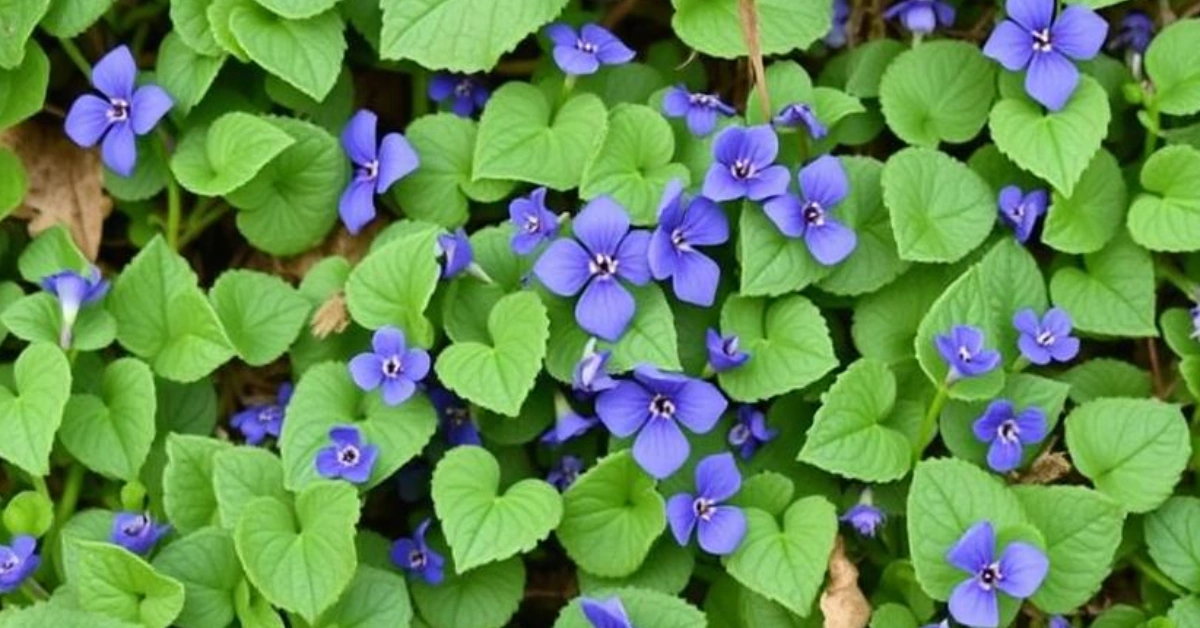
3. Henbit (Lamium amplexicaule)
Henbit is a winter annual with pinkish-purple flowers and square stems. It germinates in fall, overwinters, and blooms in early spring.
Commonly Found: Lawns, gardens, and disturbed soils
Control Tips:
- Mow regularly to prevent seed production
- Apply pre-emergent herbicides in fall
- Improve turf competition
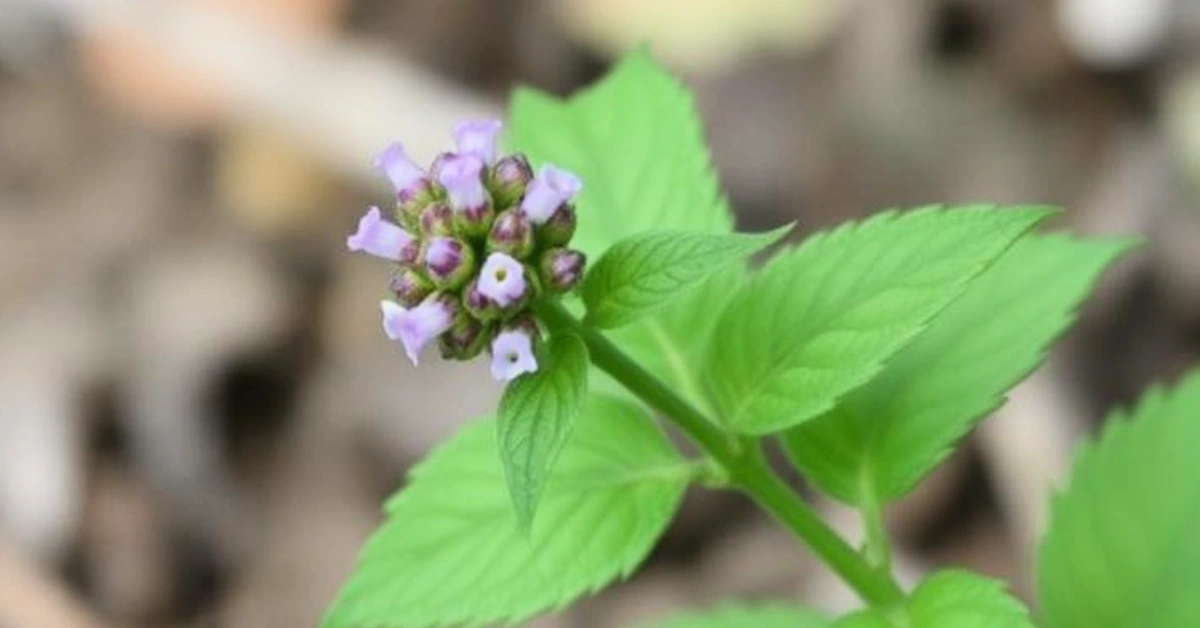
4. Purple Deadnettle (Lamium purpureum)
Often mistaken for henbit, purple deadnettle has triangle-shaped leaves and purple-tinged stems. Like henbit, it thrives in disturbed soils.
Commonly Found: Lawns, flower beds, vegetable gardens
Control Tips:
- Pull by hand early in the season
- Maintain thick turf and mulch garden beds
- Use selective herbicides for broadleaf weeds
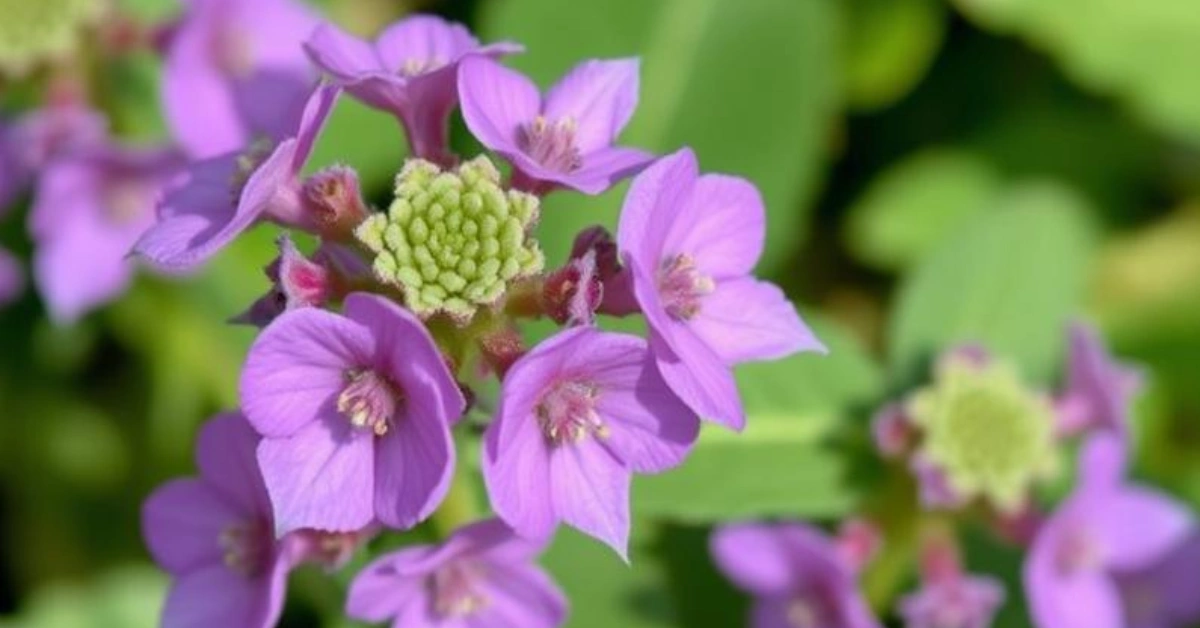
5. Purple Loosestrife (Lythrum salicaria)
Though beautiful, purple loosestrife is a highly invasive wetland plant. It forms tall spikes of purple flowers and displaces native vegetation.
Commonly Found: Wetlands, ditches, pond edges
Control Tips:
- Remove flower spikes before seeding
- Hand-pull small infestations completely
- In severe cases, use aquatic-approved herbicides
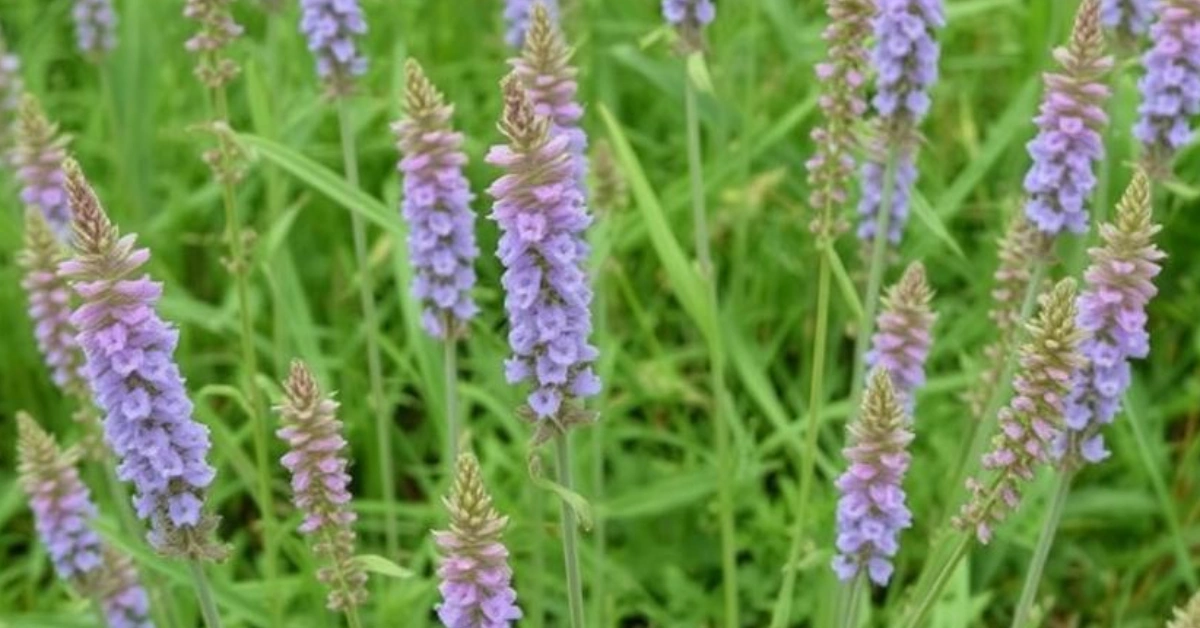
6. Canada Thistle (Cirsium arvense)
With spiny leaves and lavender blooms, this thistle is both invasive and painful. It spreads through both seeds and extensive underground roots.
Commonly Found: Roadsides, pastures, gardens
Control Tips:
- Cut back flower heads before seed set
- Apply systemic herbicides multiple times
- Avoid tilling which can spread root fragments
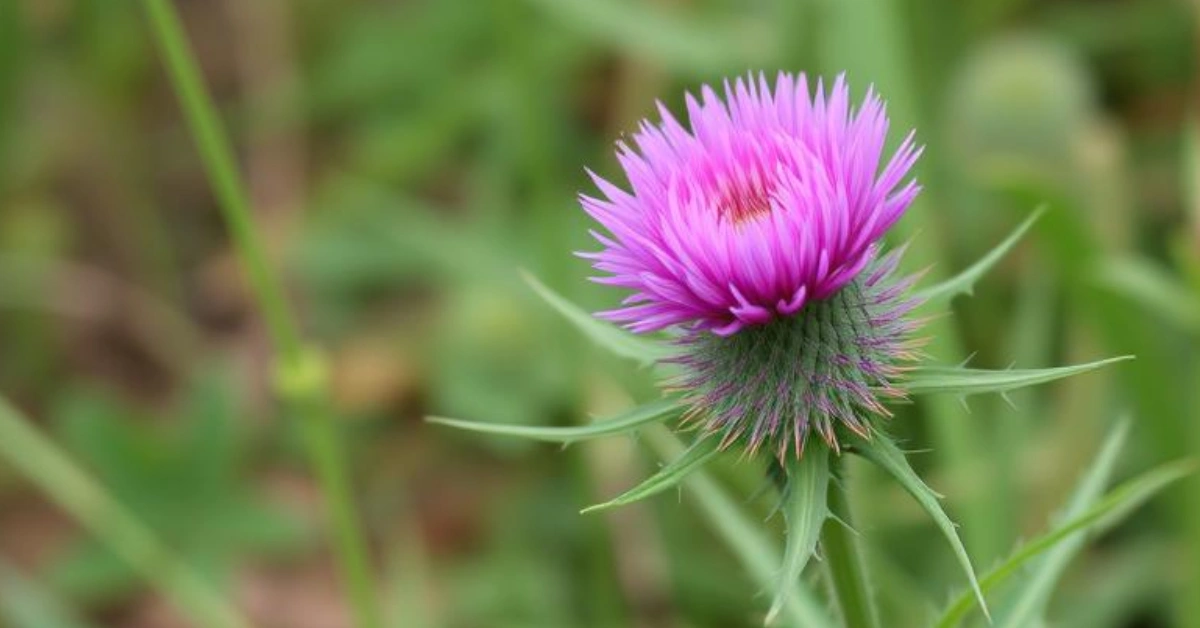
7. Common Burdock (Arctium minus)
Common burdock grows tall and produces large, sticky burrs. Its purple, thistle-like flowers appear in mid-summer.
Commonly Found: Construction zones, untended fields
Control Tips:
- Dig out taproots when plants are young
- Remove flower heads before they seed
- Repeated mowing can help reduce re-growth
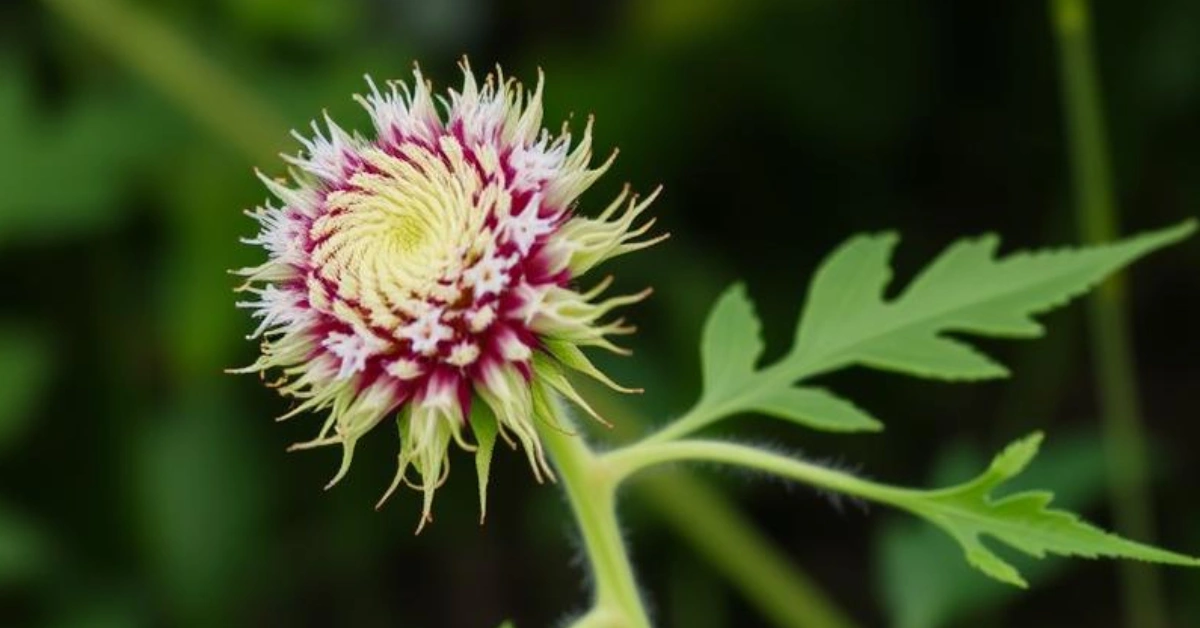
8. Comfrey (Symphytum officinale)
This deep-rooted perennial has fuzzy leaves and bell-shaped purple flowers. Though used medicinally, it spreads rapidly and is hard to eliminate.
Commonly Found: Herb gardens, disturbed soils
Control Tips:
- Regularly cut back before flowering
- Dig deeply to remove entire root systems
- Use barrier edging to limit spread
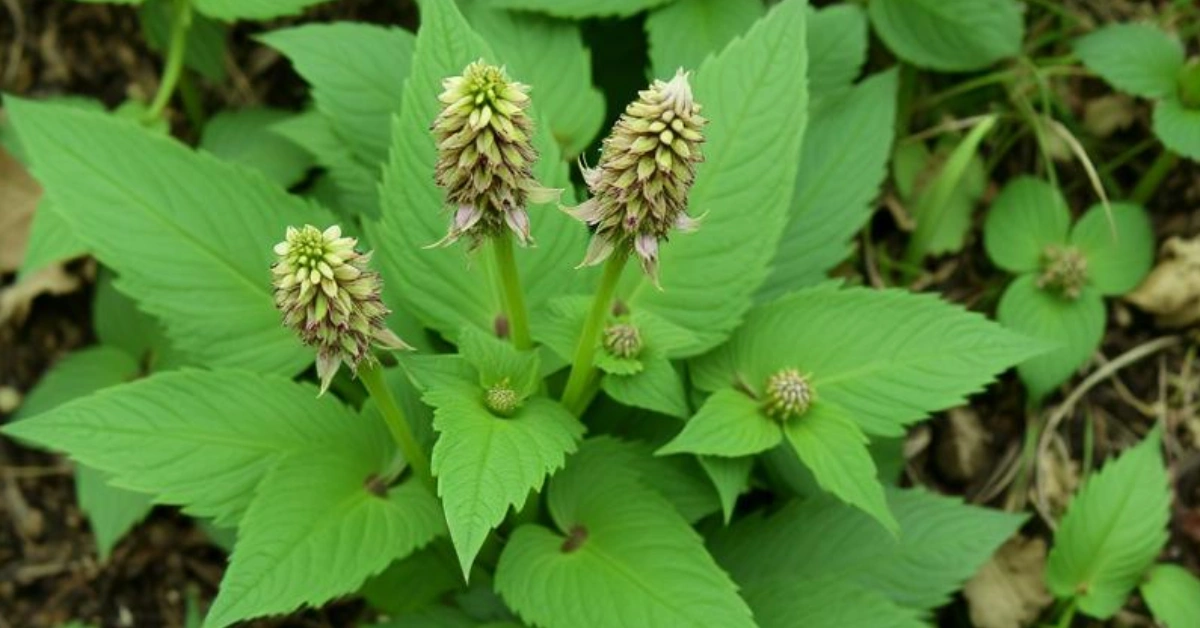
9. Thymeleaf Speedwell (Veronica serpyllifolia)
A creeping perennial that forms dense mats with small purple-blue flowers. It’s often found in poorly maintained lawns.
Commonly Found: Moist lawns, sidewalks, compacted soil
Control Tips:
- Hand-pulling and aeration
- Improve drainage
- Use post-emergent herbicide as needed
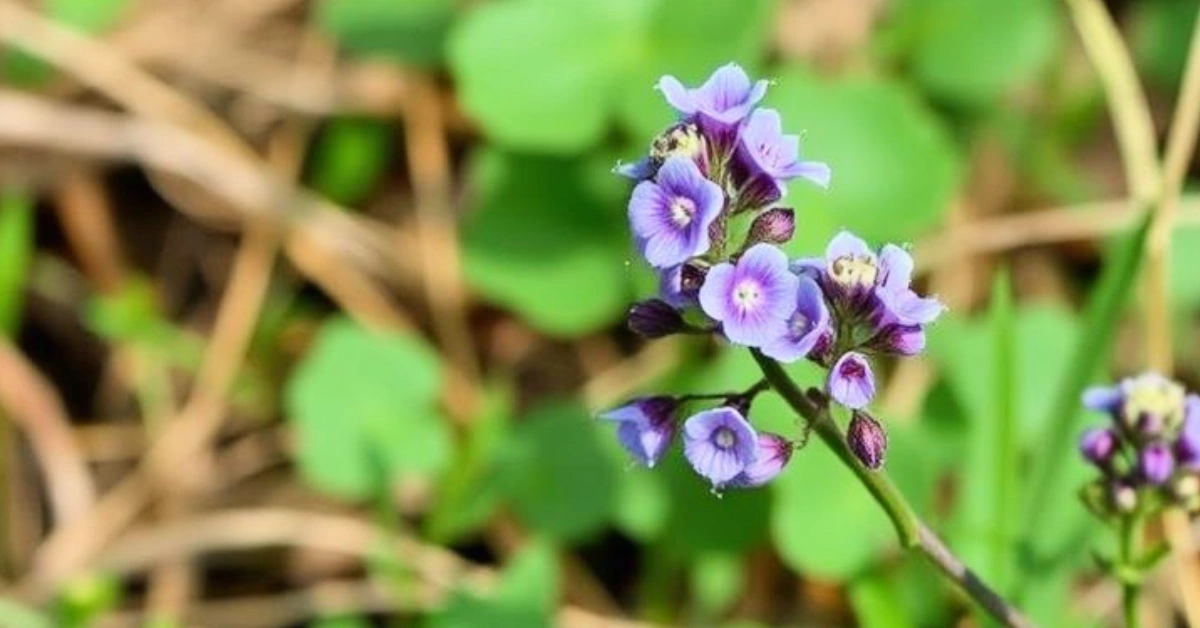
10. Musk Thistle (Carduus nutans)
This tall biennial has large, showy purple flowers and vicious spines. One plant can produce thousands of seeds.
Commonly Found: Pastures, roadsides
Control Tips:
- Dig before flowering
- Apply selective herbicide to rosettes
- Prevent seeding at all costs
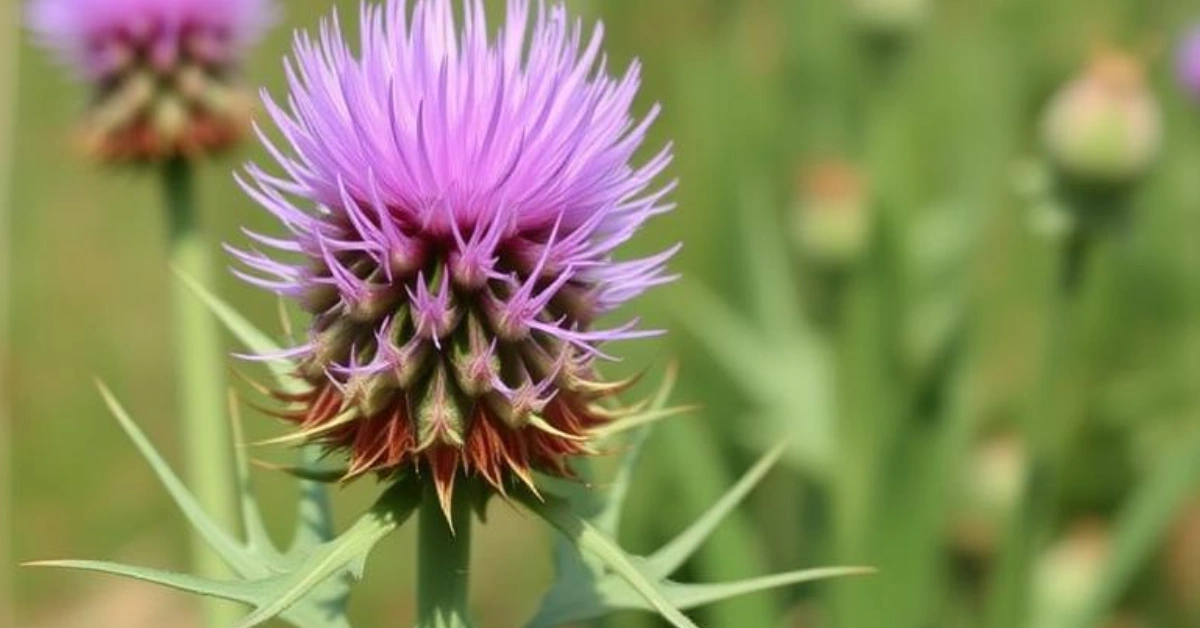
11. Meadow Knapweed (Centaurea × gerstlaueri)
This thistle-like hybrid can dominate open fields and pastures with its purple blooms.
Commonly Found: Meadows, gravelly soils
Control Tips:
- Mow before seed production
- Apply broadleaf herbicide
- Practice rotational grazing if in pastures

12. Cutleaf Teasel (Dipsacus laciniatus)
While the flowers are more white-to-lavender, this plant is often grouped among weeds with purple flowers due to its light hues.
Commonly Found: Roadsides, ditches
Control Tips:
- Remove before flowering
- Use herbicide on basal rosettes
- Avoid spreading via roadside mowing
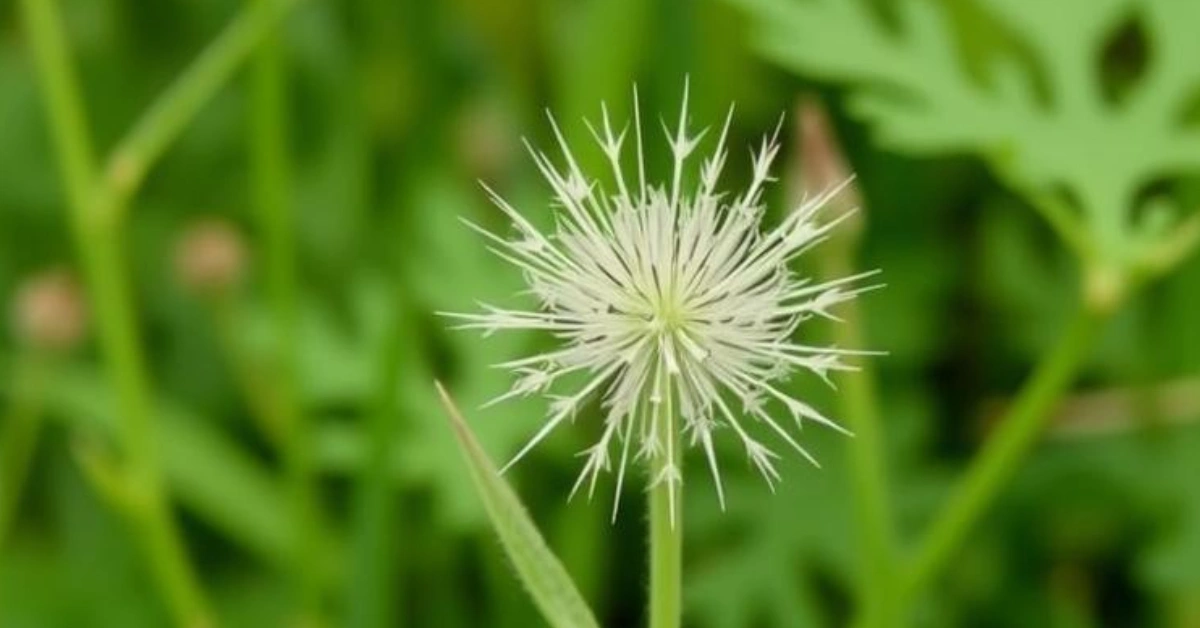
13. Velvet Grass (Holcus lanatus)
Though a grass, its seed heads have a purplish tint. It invades lawns and competes with turf grasses.
Commonly Found: Poorly drained soils
Control Tips:
- Improve drainage and nutrient balance
- Remove by hand or mow before seed heads mature
- Re-seed bare areas with competitive grass species
14. Forget-Me-Not (Myosotis spp.)
These delicate plants often escape garden borders and spread widely. Small purple-blue flowers bloom in spring.
Commonly Found: Damp, shaded garden beds
Control Tips:
- Thin out in early spring
- Mulch beds to suppress spread
- Pull out entire plant, including roots
Final Tips to Prevent Weeds with Purple Flowers:
- Mow high and often to strengthen your lawn’s natural defenses.
- Fertilize based on soil tests to encourage thick, healthy grass growth.
- Mulch garden beds to suppress seed germination.
- Act early in the season—many weeds with purple flowers bloom in spring and go to seed quickly.
- Stay consistent—eradicating weeds takes vigilance, especially perennials that spread via underground roots.
While weeds with purple flowers might seem harmless (or even pretty), many of them are aggressive, invasive species that can harm your lawn, garden, and even native ecosystems. Recognizing and controlling these flowering weeds is essential for maintaining a healthy landscape. With the right identification and long-term lawn care strategy, you can eliminate weeds with purple flowers and keep your yard looking its best all year long.
If you’re constantly battling these persistent invaders, consider keeping this list handy and inspecting your lawn regularly—because weeds with purple flowers might already be blooming beneath your feet.

